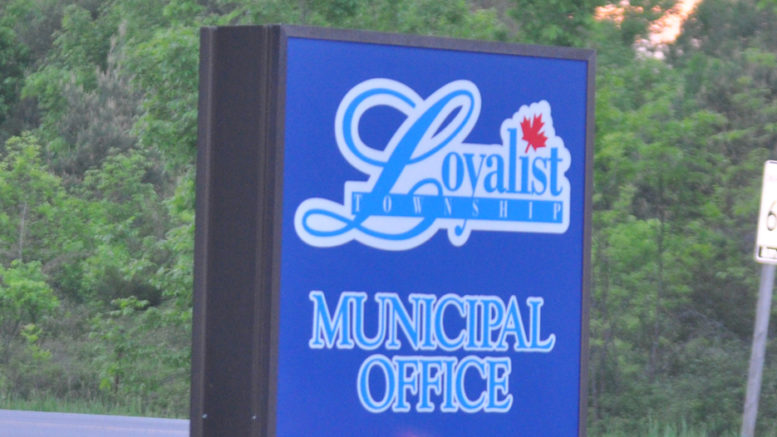Inclusion of property would give council 60 days notice prior to demolition
Adam Bramburger
Beaver Staff
Again this Monday, Loyalist Township councillors will be asked to navigate the delicate balance between upholding property owners’ rights and preserving shared cultural heritage.
On May 28, council accepted recommendation from its heritage advisory committee to place 57 properties on a register of cultural heritage significance, but after receiving petitions and public deputations, allowed that owners could request in writing to have their buildings excluded from the list.
In a report written Wednesday, the township’s heritage assistant Darragh De Groot indicated five property owners in Bath had subsequently requested their properties — 145 Davy Street, 146 Davy Street, 346 Main Street, 398 Queen Street, and 531 Main Street — removed from the registry.
In the report De Groot explained non-designated heritage properties on the registry will have interim protection against demolition. Owners whose properties are listed are required to give council 60 days notice of intent to demolish or remove a structure in accordance with the Ontario Heritage Act.
“That additional time allows the township to consult with the heritage committee, the community and the property owners, in order to permit or deny demolition, DeGroot indicated. “If the decision for demolition is denied, the township must give notice of their intent to designate the property, under the Ontario Heritage Act.”
De Groot indicated if council wishes to delist properties, there will be no measures in place to protect their heritage attributes. Property owners would be allowed to apply for a regular demolition permit, which would be issued in 10 days with no consultation from the heritage committee or the community.
Among the five properties to be discussed, there has been public concern to potential removal of 531 Main Street from the registry with 13 letters addressed to council. The property is also known as the Jeptha Hawley House and it is currently marked with a plaque issued by the Ontario Archaeological and Historic Sites Board in 1959. The plaque suggests the house is the “oldest in the Bay of Quinte district,” built about 1785 by a Loyalist from Arlington, Vermont.
De Groot also noted the home remains the oldest continuously occupied wood-frame home in all of Ontario.
The owners of the waterfront home, Lawrence and Paulette Batchilder, presently have it listed for sale.
The president of the United Empire Loyalists Association of Canada, Peter. W. Johnson, was one of the letter writers urging council to keep the house on its registry. He noted Hawley was a prominent Loyalist and key figure in early Bath and said the home is the earliest surviving house in the region still used as a residence. Johnson disputed the need to remove the home from the registry.
“We can see no reason to strike down its limited protection unless it is to make it easier for future owners to demolish the house,” Johnson wrote. “It would be a sad day if Loyalist Township were to turn its back on this rich history and put this heritage house in danger.”
Thomas Hawley, a direct descendent of Jeptha Hawley’s brother also wrote a letter. He noted he remembered his father, Norman Hawley, talking about the house for as far back as he can remember and taking pride and accomplishment in its storied history. His father passed away five years ago, but Thomas Hawley indicated a potential demolition “would devastate myself and my young sons” and that “the ability to physically take my boys to that location and show them a part of our family history is irreplaceable.”
Linda Smith, who described herself as Jeptha Hawley’s sixth great granddaughter also expressed “grave” concern and told council in her letter that architecturally the frame one-storey house with a stone wing is the oldest structure in the village and the only remaining original settler’s house.
Bath resident Gus Panageotopoulos also wrote a letter and he’s been rallying members of the public to do likewise. In an e-mail to the Beaver, he stressed “Once gone, a structure is gone forever.”
Panageotopoulous acknowledged in his e-mail council’s “tendency to support property rights trumping heritage conservation” but argued the notification period prior to demolition is a valid restriction in this case.
“We know that a number of people may not share our enthusiasm for built heritage conservation and the benefits it could bring to the economic development opportunities in Loyalist Township. But, we trust that most people would have an appreciation of the importance of the Hawley House and recognize that it should have some form of protection from the possibility of demolition without constructive dialogue about its future.”
Following the five requests, the township’s heritage committee met twice to review the request. It maintained its recommendation for designation for 145 Davy St, 146 Davy St., and 364 Main Street as examples of the 20th century development of the village. It strongly recommends keeping 531 Main Street and 398 Main Street on the registry. The property at 398 Main Street, built in 1828 is part of pre-Confederation Bath and supports 19th Century development of village streetscape through massing, scale, and setback. The building was associated with the Lewis family, the village’s blacksmiths.
The meeting is at 7 p.m. at the municipal office in Odessa.

